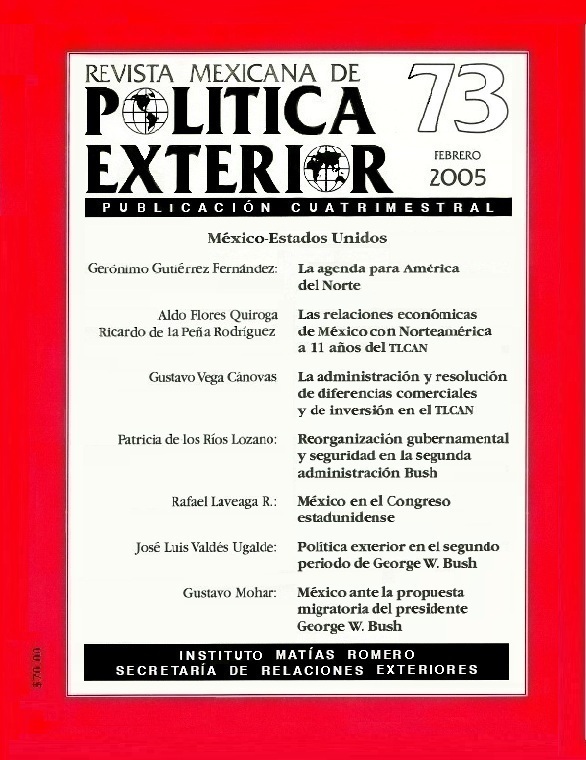Mexico’s Economic Relations with North America 11 years after NAFTA: An Assessment
Main Article Content
Abstract
Flores Quiroga and De la Peña Rodríguez take stock of the performance of NAFTA 11 years after the coming into force of the Treaty. They begin by reflecting on the behavior of trade, investment and Mexico’s macroeconomic indicators since 1994, setting the stage for a discussion of the pending agenda, new initiatives and the lessons NAFTA has taught us. In the authors’ opinion, the Treaty has been highly effective at boosting trade and investment in the region, although some shady areas still persist, namely the disparities between north and south, which have been accentuated by the lack of mechanisms for the redistribution of wealth and proper financing for infrastructure and human capital in more backward areas. The authors conclude by underlining the public policies Mexico needs to implement to increase growth potential and competitiveness, including the introduction of structural reforms; programs that promote the integration of productive chains; the linking of sectorial integration programs to regional development policies, and improvements in the business environment by strengthening the State of Law. As concerns the trilateral agenda, they emphasize the importance of initiatives within the framework of the Security and Prosperity Partnership of North America, such as the standardization of rules and regulations. The challenge, they say, is to translate the guidelines of this Partnership into concrete actions that encourage greater integration and increase the competitiveness of the region.

